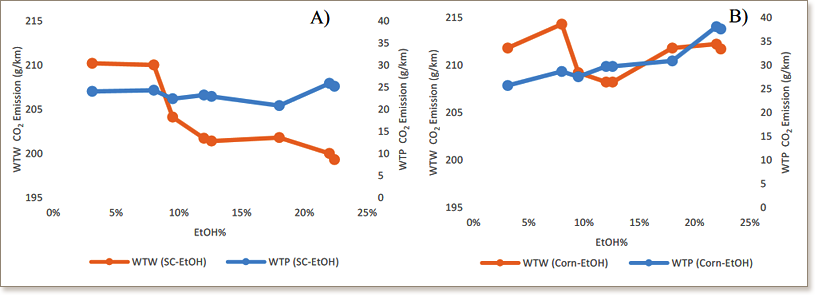Optimizing Blendstock Composition and Ethanol Feedstock to Reduce Gasoline Well-to-Pump CO2 Emission


Lifecycle CO2 emission of ethanol blended gasoline was simulated to investigate how fuel properties and composition affect overall emission. Fuel research octane number (RON), octane sensitivity and ethanol content (derived from sugarcane and corn) were varied in the simulations to formulate blended fuels that economically achieve target specifications. The well-to-pump (WTP) simulation results were then analyzed to understand the effects of fuel composition on emission. Elevated ethanol content displaces aromatics and olefins required in gasoline blendstock to reach a target fuel specification. The addition of greater sugarcane-based ethanol percentage in constant aromatics and olefins fuel reduces its WTP CO2emission. Corn-based ethanol blending does not offer CO2 emission offset due to its high production emissions. The mixing of sugarcane-based with corn-based ethanol is shown to be a potentially effective method for achieving a blended fuel with a lower lifecycle CO2emission. Besides CO2 emission, the total greenhouse gas (GHG) emission from land-use conversions (LUC), CH4, and N2O are also significant in determining the optimal fuel blend. Herein, we present preliminary results showing that total GHG emissions significantly increase when either corn or sugarcane ethanol is blended at even small percentages; detailed results will be addressed in future communications.
DOI:10.1016/j.egypro.2017.03.840

"KAUST shall be a beacon for peace, hope and reconciliation, and shall serve the people of the Kingdom and the world."
King Abdullah bin Abdulaziz Al Saud, 1924 – 2015
Thuwal 23955-6900, Kingdom of Saudi Arabia
© King Abdullah University of Science and Technology. All rights reserved